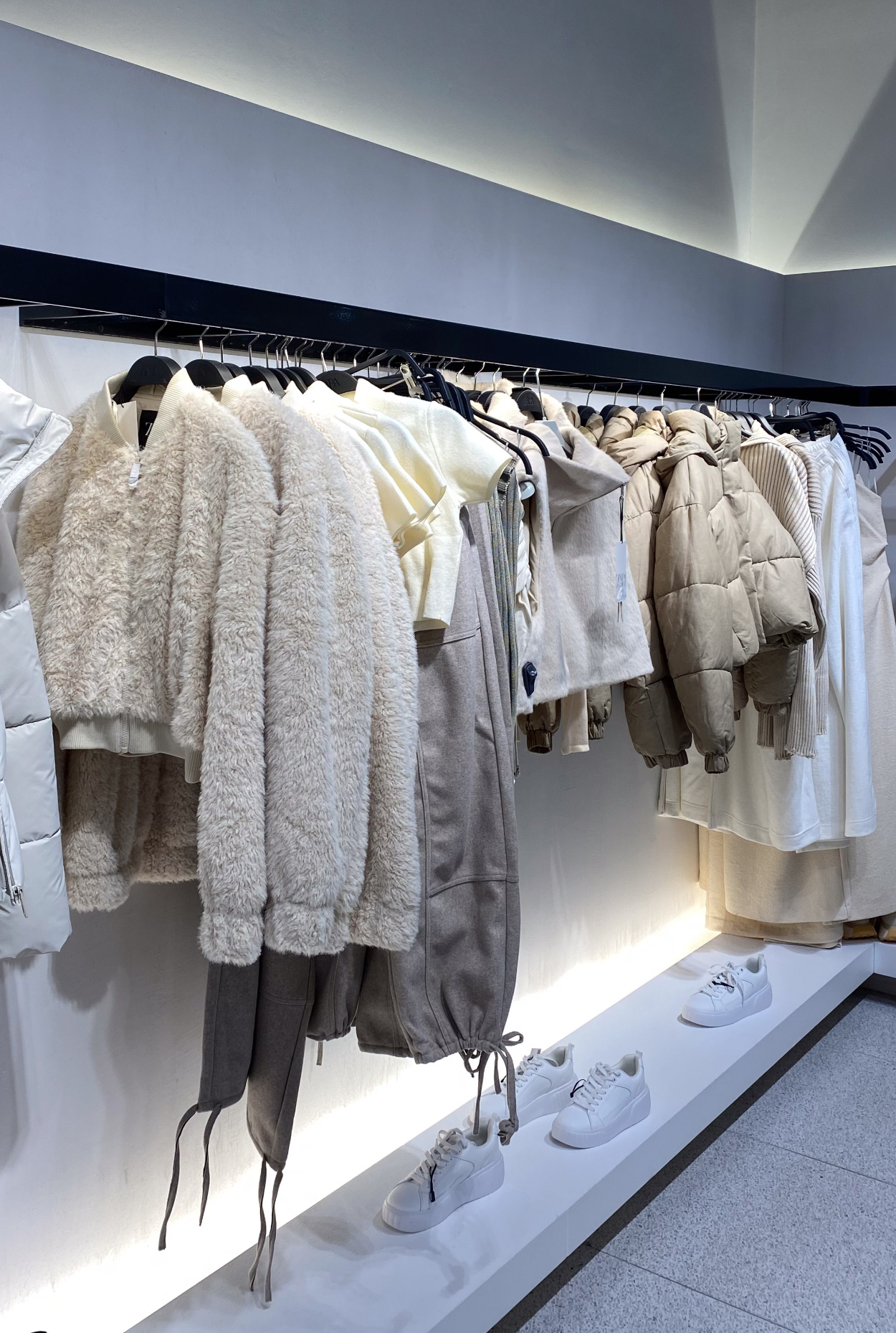This article was originally published in The Interline’s second Sustainability Report. To read other opinion pieces, exclusive editorials, and detailed profiles and interviews with key vendors, download the full Sustainability Report 2024 completely free of charge and ungated.
Key Takeaways:
- China’s government-led sustainability initiatives are driving green innovation, particularly in circularity, new retail spaces, and alternative materials, potentially influencing global attitudes given the country’s scale and role in the supply chain.
- The resale market in China, especially for luxury goods, is experiencing significant growth, with predictions of reaching $32 billion by 2025, driven by changing consumer attitudes and a shift towards more conscious consumption.
- China’s investment in sustainable materials and manufacturing capabilities positions it to potentially become a leader in sustainability, outpacing other regions in the development and scaling of eco-friendly innovations for the fashion industry.
When it comes to sustainability, China is a unique case. Across the west, governments have begun to reset and in some cases abandon their own state-level green initiatives — often in direct opposition to prevailing electoral sentiment — as short-term shocks take precedence.
Beijing, by contrast, likes to play the long game. In an inversion of its global counterparts, China’s relationship with sustainability is that of a country with significant government policy but low consumer demand. (There is a parallel here in Beijing’s attempt to shift economic focus from housing to complex technology: an investment in future prosperity, no matter how difficult.)
As a direct result, China has seen a surge in green innovation. Through legislation, a strategic vision for carbon neutrality by 2060, clean energy initiatives, and private sector incentives, the country is building a framework of sustainable solutions that is gearing up to shape consumption. As such, there are three trends within China’s fashion market that will drive future demand and, over time, influence global attitudes given the country’s scale and role in the supply chain.
These are circularity: the appearance of new retail spaces and events; and, most importantly, the uptake of alternative materials. And the way these trends develop may have an influence on how other regional attitudes to, and industry investments in, sustainability shape up.
Circularity and resale
First, sustainability initiatives must reconcile the economy’s dependence on growth built upon finite resources. Sustainability cannot be decoupled from commercial success. One popular approach to this challenge is the promotion of circularity, which has become a key concern of Beijing in recent years. The government’s 14th Five Year plan aims, by 2025, to achieve the repurposing of 25% of its textile waste and annual production of two million metric tons of recycled fibre.

Dr. Christina Dean, founder of NGO Redress, which works to promote circularity, and CEO of The R Collective — a social impact waste business that works to reduce waste – believes this to be cause for optimism. “This waste ‘crisis’ is an opportunity to establish a circular fashion economy — a system where materials never become waste, nature is regenerated and responsibility is taken for the product’s entire lifecycle and its impact on the planet — thanks to this abundant, perpetual flow of ‘waste’ materials coming from consumers and industry alike.”
The Sustasia Fashion Prize, launched by Shanghai Fashion Design Association (SFDA) and sustainability agency yehyehyeh in September 2024, aims to promote sustainable practices and accelerate innovation in the fashion industry in China and Asia more widely. The brand new award encourages young designers in this region to use sustainable, innovative materials and production processes, by offering industry and financial support.
And this support is translating into new attitudes for everyone from designers to shoppers, who, according to Dean, can’t get enough: “They appear to be flocking to second-hand clothing purchases as if their (fashion) lives depended on it.” Indeed, championed mainly by high- and medium-income groups — under the encouragement of fashion influencers and media — the resale clothing market in China has been growing steadily.
According to a report by iResearch, China’s second-hand luxury market in particular is predicted to jump from around $8 billion in 2020 to $32 billion in 2025. A combination of factors from changing attitudes during the pandemic, a shift in opinion around second-hand goods, and more conscious consumption is contributing to this rise.
This uptake is part of a wider trend in the growth of the sharing economy in China: from ride-hailing to bikes, umbrellas, and power banks, second-hand consumption has been gaining in popularity among young people. Gen Z and Millennials together account for more than 80% of the total number of second-hand luxury customers. As these demographics age, this will only become more prevalent resulting in a drop in demand for new goods, a rethinking of how to rescue existing objects and garments, and a necessary reprioritisation amongst brands of their different revenue streams.
Events and retail spaces
This growing consumer interest in sustainability can be seen in several recent openings and events — and the positivity with which they have been received.
Take menswear label Youngor, which has always been known for its eclectic investments. Even with this reputation, the company still managed to turn heads with the launch of HAI550, China’s first sustainable lifestyle commercial space. Spanning 8 stores and 7000 square metres in Shanghai, the centre includes pop-ups, galleries, spaces for influencers to film — as well as housing emerging labels dedicated to sustainability. Fun, engaging, and experience-focused, the building walks the walk: built by sustainable methods with reclaimed materials and energy-saving initiatives.

Also in Shanghai, Earth Day saw local sports giant ANTA launch its new carbon-neutral boutique. Like HAI550, ANTAZER is a fiercely cross-disciplinary space — featuring installations alongside products as well as providing workshops and literature on green issues. Dan Cui, the sustainable fashion consultant behind the project, is keen to emphasise the space’s multidimensionality: that it’s not just about designers and fashion. “Sustainability here becomes not so much an endpoint as a beginning: of a conversation about what retail could one day become,” he says.
Indeed, conversations such as these are a key part of this trend. Shanghai Fashion Week Organisation has pioneered the growth in sustainability-led events across the last decade, most recently by developing its Ulio space (also devised by Cui) that brings these issues to the general public. Again, discussions were in no short supply at the GREENEXT expo, an event that gathered together the entire fashion ecosystem over two days to, in the words of Rethink Fashion founder Dominique Simard, “accelerate the transformation of the industry, develop awareness and trigger collaboration, and concrete actions.”
The focus on cross-pollination between disciplines was well-received by fashion professionals and consumers alike. Running across two days in August 2024, the event attracted 4,306 attendees, including leading global companies, innovators, and industry experts, who comprised, in the words of founder Dr. Hong Zheng, “a sustainable community where partners can share, exchange, and inspire each other, empowering enterprises to enhance both their commercial and social value.” These included big names like fashion brands JNBY, Shokay, Canopy, Idole, On the list, Esquel, RESET, Polymateria, and the charities Act Asia and Redress.
The fact that shoppers are showing up for such discussions — and patronising spaces for them to take place — demonstrates a significant change in consumer sentiment, one that is at last catching up with government planning.

Regenerative and alternative materials
When it comes to alternative materials, consumer interest in scientific innovation is also notable. “Chinese luxury consumers,” Chen affirms, “love high-tech products, regenerative materials, and next-generation fibres.” But such demand is useless without supply. Innovation in sustainable material still suffers — the world over — from the issue of scalability. If China can crack this disconnect, it would put the country in a position to make the most of the global green economy.
There are several signs that it may be on its way to doing so. Beijing’s PhaBuilder, for instance, is a pioneering synthetic biology company specialising in eco-friendly alternatives to traditional plastics. The startup has garnered substantial support (including three rounds of financing and a selection of strategic partnerships with industrial leaders), which has in turn translated into positive market feedback. It’s not alone — BloomGEM, a pioneering company in biological dyeing based in Shenzhen is currently garnering significant attention from both Chinese and American investors. And then there’s bio-based leather producers Synmetabio 贻如. To validate mass production, the company has established the world’s first carbon-negative bio-based leather manufacturing plant in Changzhou, with an expected annual production capacity of 5 million metres by early 2025.
Together, these show how public sector mandate has translated to private sector capital: in China, the investment growth rate is around 20% to 30% annually, while in the U.S., investments in sustainable materials are growing at about 15% to 25% per year. With the support of these capital inflows and the fashion industry’s increasing focus on sustainability, the market is maturing — and China is potentially putting itself on the front foot from both a sustainable production and sustainable consumption perspective.

Yidi Chen is the Gen Z founder of Matters, a material-driven agency in Shanghai that focuses on bringing responsible bio-based innovation to fruition and enabling forward-thinking businesses to reach their ESG goals starting with materials. She believes that this represents a crucial milestone. “Globally, China may not be widely recognized for its innovation in next-generation materials, but its manufacturing capabilities should not be underestimated,” Chen explains.
She believes that the existing supply chain and manufacturing expertise in China has the potential to “effectively scale these well-known material technologies.” The significance of this can’t be overstated when every market is moving in the same direction, but some are moving faster than others.
Such a paradigm shift draws immediate historical parallels, especially when Chen notes how the sustainability and carbon reduction race is often compared to the space race. History will not necessarily repeat itself — especially absent the right western investment into sustainability education, consumer behavioural change, support for new business models, and wide-scale industrialisation of new methods and materials. If the country is able to blend these different streams effectively, China could emerge as a leader in sustainability, ahead of other regions that are — at least on paper — more synonymous with sustainability regulation.
